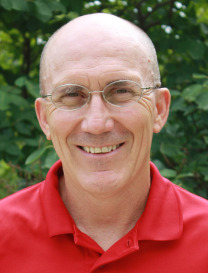AMES, Iowa – No combination of incentives will bolster job creation and economic development in Iowa if the state does not have the workforce to support new jobs. It is a reality that state leaders need to be aware of, said Dave Swenson, an associate scientist in economics at Iowa State University.
Population projections by Swenson indicate that Iowa will see limited population growth through 2020 and actually lose workers in two important demographics. The table below provides a breakdown, but the greatest shift is among workers 45-64 years old. Swenson said the projections follow a decade when Iowa’s population only grew by around 4 percent, compared to nearly 10 percent growth nationally. If the projections hold, the state could lose 74,000 workers between the ages of 16 and 64.
“This may explain the fact that our economy is currently not growing and that we have an obvious shrinkage in our labor force of late,” Swenson said. “Our underlying demographics may be the major culprit in our slow recovery.”
Projected Iowa Population Change 2010-2020
| 2010 | 2020 | Difference | |
|---|---|---|---|
| Age 16-24 | 389,705 | 375,805 | -13,900 |
| Age 25-44 | 747,131 | 804,092 | 56,961 |
| Age 45-64 | 812,476 | 695,273 | -117,203 |
| Age 16-64 | 1,949,312 | 1,875,170 | -74,142 |
| Over Age 65 | 452,888 | 559,628 | 106,740 |
| Total Age 16 and Over | 2,402,200 | 2,434,798 | 32,598 |
Source: Dave Swenson
There are a couple of reasons for this population shift. Swenson said out-migration of workers to other states is the primary factor because workers are offered better wages and more opportunity. The highest rate of out-migration in the last decade was among 35-44-year-old workers, he said.
“People are going to where they get the best return on their skills and their investment in education. They’re also going to go where they have the greatest opportunity as a household to be economically stable,” Swenson said.
Impact goes beyond workforce
The decision to leave Iowa for other employment opportunities often involves a family. As a result, the state is not just losing one or two workers, but their children – who will eventually become part of the future workforce as well. Swenson said past losses explain part of the projected decline in the 16-24-year-old demographic – those who are learning skills to later apply in the workforce.
There are also social consequences to the losses in young workers. The workers leaving the state or rural areas, he said, are also the people who run for city council or volunteer at their church or local service groups. Many smaller communities are not just fighting competition from other states, but larger cities in Iowa that offer better job opportunities and more quality-of-life amenities.
“In many rural communities, that was the most tangible loss. It wasn’t just the jobs and the labor force members; it was the loss in leadership. Being able to nurture and sustain young adult leadership is important to the cohesion and stability of communities,” Swenson said.
What can be done?
To maintain a growing economy, Swenson said there must be a healthy mix of workers of all ages and skill levels but primarily those younger workers who fuel state and regional productivity gains.
More than any specific action, Swenson wants policymakers to be aware of how population loss will impact the economy. People will go to where the jobs are, and jobs will go to where the people are, in larger, urban areas, Swenson said.
“If the economy is not growing and it is not dynamic or it is aging rapidly then it is going to limit the state’s ability to be attractive,” Swenson said. “I want people to understand what is happening so that when they try to make decisions or try to describe the problem, they’re actually describing the real problem.”
Swenson’s full report on Iowa’s labor force can be found at: http://www.econ.iastate.edu/sites/default/files/publications/papers/p16040-2013-03-13.pdf
